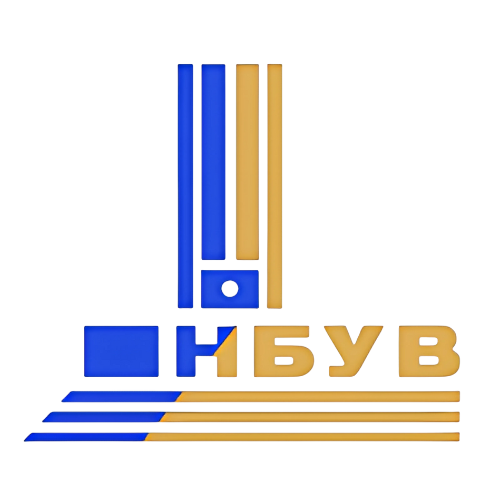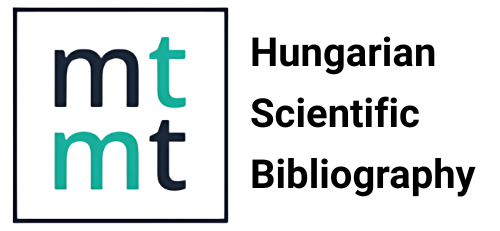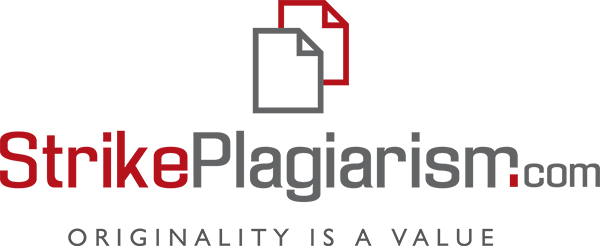The virtual linguistic landscape of ecclesiastical schools in Transcarpathia
DOI:
https://doi.org/10.58423/2786-6726/2024-2-90-108Keywords:
Transcarpathia, virtual linguistic landscape, religion, ecclesiastical school, online space, Hungarian posts, bilingual posts, symbolsAbstract
We live in an age where everywhere we look, thousands of pieces of information are streaming towards us. This fact in itself highlights the importance of the linguistic landscape in our everyday lives, as everything that surrounds us, everything we perceive influences our thinking and therefore our use of language. In the 21st century, we need to pay particular attention to the virtual world, as a large percentage of the younger and even older generations receive a significant proportion of their stimuli through some types of electronic communication tools or social platforms. Schools have a particularly important role in language development and formation, as young people, the future generation, are most shaped within their walls. In the present study, we analysed a sample of posts published in the last few years on the social platforms (official website and Facebook) of the ecclesiastical schools of Transcarpathia. We relied on statistical and comparative analysis of the textual content of these entries. In addition, we examined the meta-linguistic information of the entries. The overall visual appearance of the website was also taken into consideration, i.e., the types of images published were also investigated. In the research, it was assumed that all the official webpages of the schools under investigation contain entries in both Ukrainian and Hungarian. We also assessed whether a higher percentage of entries in Hungarian appeared on the schools’ online interfaces. Results showed that the number of interactions by people who followed the sites was higher for Hungarian language posts, advertisements and articles. We assumed that religious posts and symbols regularly appeared on the websites and Facebook pages, and that a higher percentage of these posts and symbols appeared in Hungarian. It was also hypothesized that the volume of texts in Ukrainian was smaller than the amount of texts in Hungarian. The research has confirmed that both Ukrainian and Hungarian entries are found on the websites, with a higher share of entries in Hungarian. It also confirmed our hypothesis that followers of the websites tend to respond more frequently to posts in Hungarian, due to the fact that the majority of followers use Hungarian as their mother tongue. Last but not least, the research revealed that religious posts and symbols regularly appear on the official websites and Facebook pages of the lyceums, and the language of these posts is mostly Hungarian.
References
Bartha, Csilla 2017. Multimodális szemiotikai repertoárok, ideológiai többszólamúság és reflexivitás: A vizuális nyelvek kritikai nyelv(észet)i tájképe. Plenáris előadás. Absztrakt [Multimodal semiotic repertoires, ideological polyphony and reflexivity: The critical linguistic landscape of visual languages. Plenary presentation. Abstract]. In: Nyelvi tájkép, nyelvi sokszínűség. Műhelykonferencia. Csíkszereda: Sapientia EMTE, 2017. szept. 22–23. (In Hungarian)
Bartha, Csilla – Laihonen, Petteri – Szabó, Tamás Péter 2013. Nyelvi tájkép kisebbségben és többségben: egy új kutatási területről [Linguistic landscape in minority and majority: from a new field of research]. Pro Minoritate 22/3: 13–28. o. (In Hungarian)
Blommaert, J. 2016. The Conservative Turn in Linguistic Landscape Studies. Tilburg Papers in Culture Studies. Tilburg: Tilburg University Press. No. 156.
Bódi, Zoltán 2015. Az internetes nyelvváltozatokról [About online language versions]. e-nyelv.hu magazin, 2015. augusztus 31. https://e-nyelvmagazin.hu/2015/08/31/az-internetes-nyelvvaltozatokrol/ (Accessed: 31. 05. 2024). (In Hungarian)
Brown, Kara D. 2005. Estonian “Schoolscapes” and the Marginalization of Regional Identity in Education. European Education 37/3: pp. 78–89.
Crystal, David 2001/2004. Language and the Internet. Cambridge: Cambridge University Press.
Csernicskó, István 2013. Államok, nyelvek, államnyelvek. Nyelvpolitika a mai Kárpátalja területén (1867) [States, languages, state languages. Language policy in today’s Transcarpathia (1867)]. Budapest: Gondolat Kiadó. (In Hungarian)
Csernicskó, István 2019. Fények és árnyak: Kárpátalja nyelvi tájképéből [Lights and shadows: From the linguistic landscape of Transcarpathia]. Ungvár: Autdor-Shark. (In Hungarian)
Csernicskó, István – Hires-László, Kornélia – Márku, Anita – Máté, Réka – Tóth-Orosz, Enikő 2020. Tévút az ukrán nyelvpolitikában: Ukrajna törvénye „Az ukrán mint államnyelv működésének biztosításáról” (elemző áttekintés) [Misdirection in Ukrainian language policy: the Law of Ukraine „On ensuring the functioning of Ukrainian as a state language” (analytical overview)]. Törökbálint: Termini Egyesület. (In Hungarian)
Hámori Ágnes 2018. „Jó lett, Taven baktali!” Egy orális kultúra vizualitása: a cigány nyelv meg-JEL-enései a Youtube szemiotikai terében [“Well done, Taven Baktali!” The visuality of an oral culture: the significations of the Gypsy language in the semiotic space of YouTube]. In: Tódor Erika-Mária – Tankó Enikő – Dégi Zsuzsanna eds. Nyelvi tájkép, nyelvi sokszínűség. II. kötet: Nyelvhasználati terek és nyelvi sokszínűség. 2017. szeptember 22–23., Csíkszereda. Kolozsvár: Scientia Kiadó. (In Hungarian)
Karmacsi, Zoltán 2018. Kárpátaljai magyar tannyelvű iskolák nyelvi tájképe [Linguistic landscape of Hungarian-language schools in Transcarpathia]. In: Karmacsi Zoltán – Máté Réka eds. Nyelvek és nyelvváltozatok térben és időben. Tanulmányok a Hodinka Antal Nyelvészeti Kutatóközpont kutatásaiból IV. Ungvár: RIK-U Kft. 174–182. o. (In Hungarian)
Malinák, Judit 2008. A személyes identitás létrejötte a médiakultúra globalizálódásának kontextusában [The creation of personal identity in the context of the globalization of media culture]. In: A kultúra kódjai. Budapest: MOME. 77-91. o. (In Hungarian)
Márku, Anita 2015. Az internetes nyelvhasználat kutatásának lehetőségei a kárpátaljai magyarok gyakorlóközösségeiben [The possibilities of researching online language use in the practicing communities of Transcarpathian Hungarians]. In: Márku Anita – Hires-László Kornélia eds. Nyelvoktatás, kétnyelvűség, nyelvi tájkép. Tanulmányok a Hodinka Antal Nyelvészeti Kutatóközpont kutatásaiból. Ungvár: Autdor-Shark. 71–89. o. (In Hungarian)
Márku, Anita 2016. A kárpátaljai magyarok internetes nyelvhasználata: nyelvi kontaktus, identitás és kreativitás [Online language use of Transcarpathian Hungarians: language contact, identity and creativity]. In: Bartha Csilla ed. Általános Nyelvészeti Tanulmányok XXVIII.: A többnyelvűség dimenziói: terek, kontextusok, kutatási távlatok. Budapest: Akadémiai Kiadó. 129–146. o. (In Hungarian)
Shohamy, Elana 2006. Language Policy: Hidden Agendas and New Approaches. London: Routledge.
Szabó, Tamás Péter 2013. Térkép e táj… Iskolák nyelvi tájképe 1. [This landscape is a map... Linguistic landscape of schools, part 1]. Nyelv és Tudomány. 2013. március 22. https://www.nyest.hu/hirek/terkep-e-taj (Accessed: 14. 05. 2024). (In Hungarian)
Szabó, Tamás Péter 2017. Keresztény iskolai nyelvi tájkép [Christian schoolscapes]. Regio 25/3: 82–112. o. (In Hungarian)
Székely Levente – Szabó Andrea eds. 2017. Magyar Ifjúság Kutatás 2016 első eredményei: Ezek a mai magyar fiatalok! [The first results of the Hungarian Youth Research 2016: These are the young Hungarians of today!]. Budapest: Új Nemzedék Központ. (In Hungarian)
URL1: A Nagydobronyi Református Líceum megalakulása [The establishment of the Reformed Lyceum in Velyka Dobron]. https://dobronyigimi.at.ua/index/iskolank/0-22 (Accessed: 14. 05. 2024). (In Hungarian)
URL2: Péterfalvai Református Líceum [The Reformed Lyceum in Pyiterfolvo]. https://www.prlweb.net/ (Accessed: 14. 05. 2024). (In Hungarian)
URL3: Nagyberegi Református Líceum [The Reformed Lyceum in Velyki Berehy]. https://nbrl.com.ua/iskolank/ (Accessed: 14. 05. 2024). (In Hungarian)
URL4: Técsői Református Líceum – Bemutatkozás [The website of the Reformed Lyceum in Tyachiv – Introduction]. https://honlap.parokia.hu/lap/tecsoi-reformatus-liceum/cikk/mutat/bemutatkozas/ (Accessed: 14. 05. 2024). (In Hungarian)
URL5: Munkácsi Szent István Líceum [The Mukachevo Saint Stephen’s Lyceum]. https://munkacs-katlic.org.ua/rolunk/ (Accessed: 14. 05. 2024). (In Hungarian)
URL6: A Sztojka Sándor Görögkatolikus Líceum hivatalos oldala [The official website of the Sándor Sztojka Greek Catholic Lyceum]. https://sztojkaliceumiskolankrol.blogspot.com/ (Accessed: 14. 05. 2024). (In Hungarian)
Varis, Piia 2015. Digital ethnography. In: Georgakopoulou, Alexandra – Spilioti, Tereza eds. The Routledge Handbook of Language and Digital Communication. Oxon–New York: Routledge. pp. 55–68.










